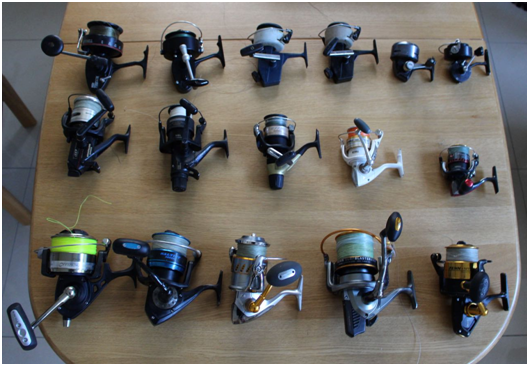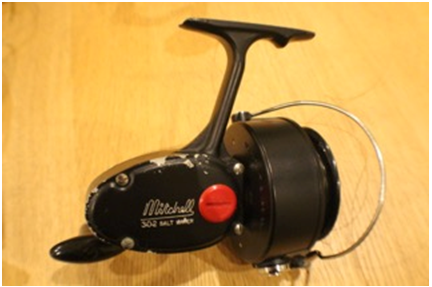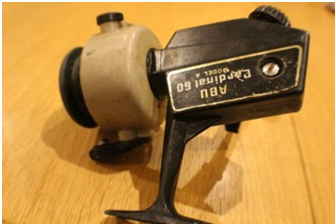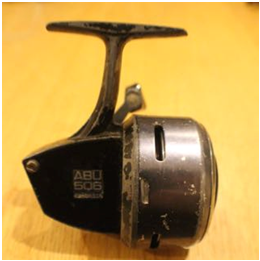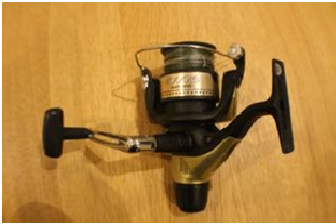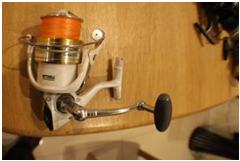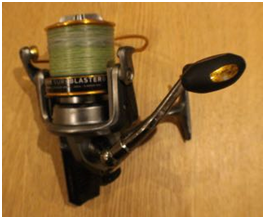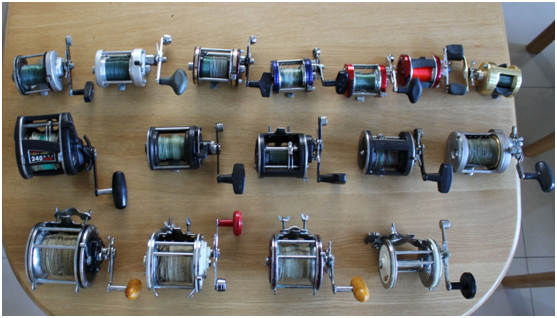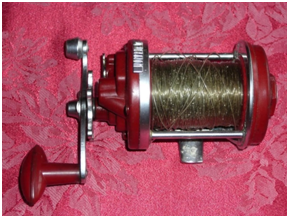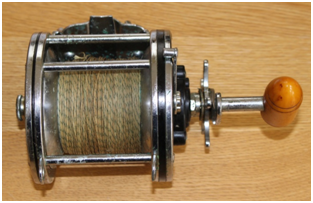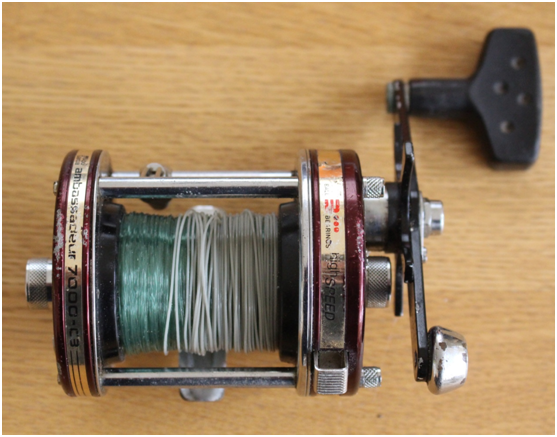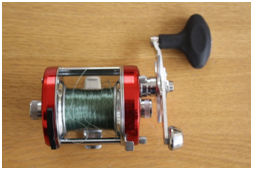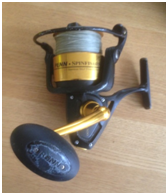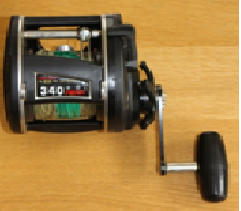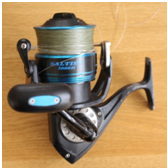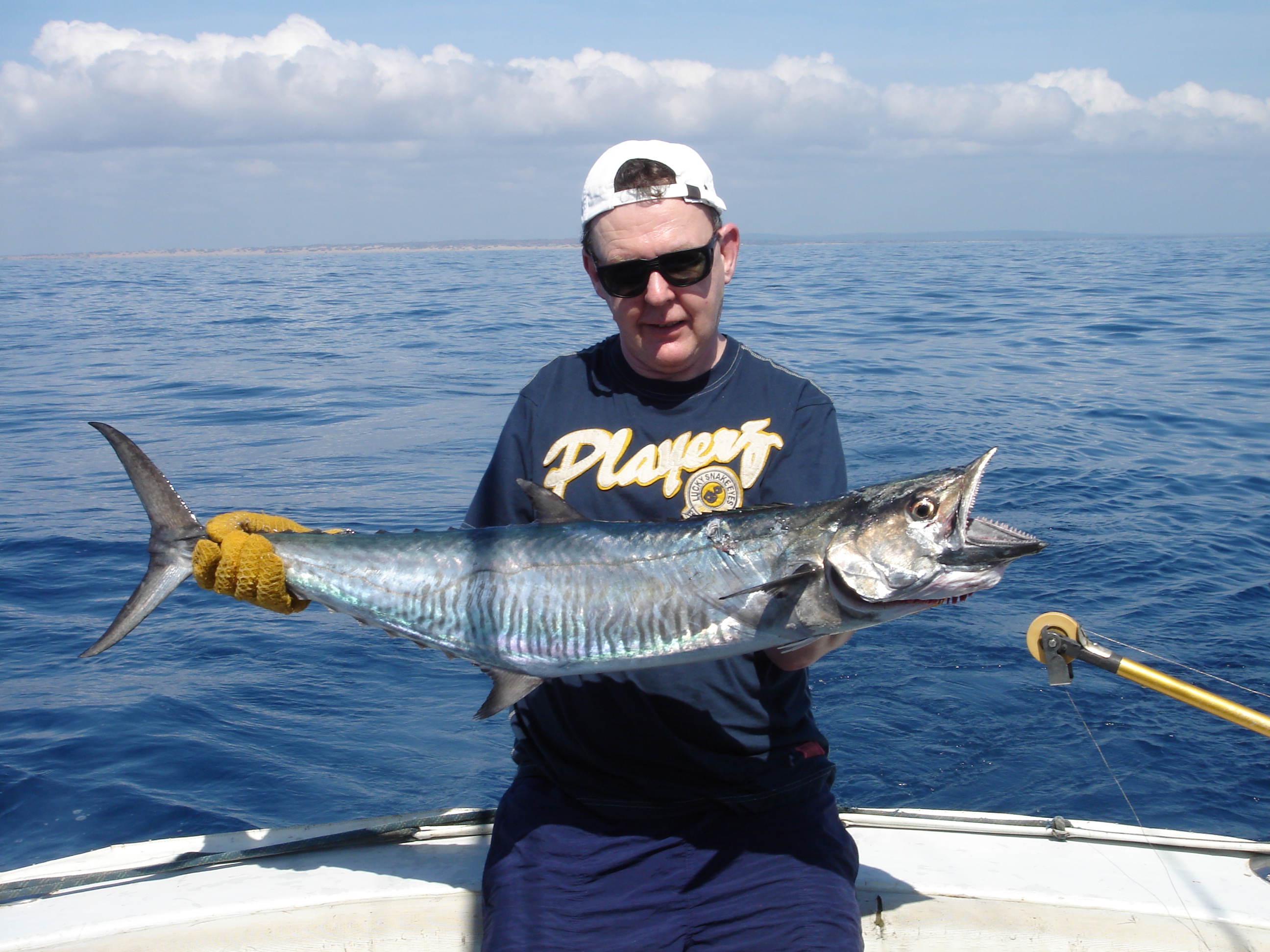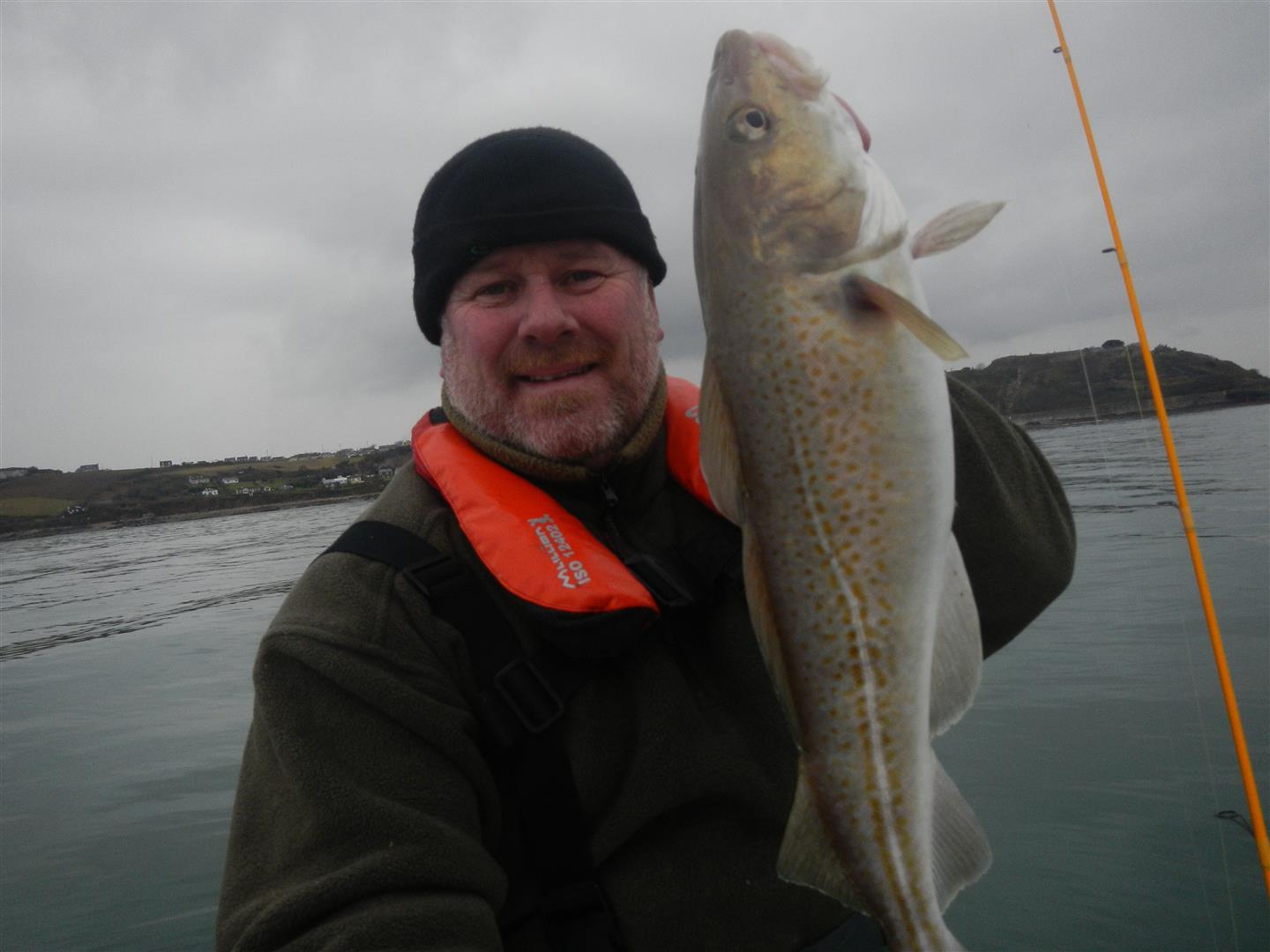*Reeling in the Years
SERVICING GEAR & A TRIP DOWN MEMORY LANE
It was that time of year again when the weather was cold and so fishing was curtailed again…… time to prepare for next year.
Fixed Spool Reels
This article started its life about servicing fishing gear but soon led to a trip down memory lane and the developement of rods, reels etc.
First to get some work done on were the various reels. Generally, I wash my reels after each trip and give them a blast of WD40 and so most are in pretty good condition even after a seasons use.
By and large spinning reels are my preferred choice now. Over the years they have improved beyond belief. For a reasonable price it is possible to buy a top class reel that will last a long time with minimum maintenance . The over-run or buzz-up that occurs with a multiplier is avoided. Casting with a spinning reel is easier, especially in the dark, and distances achieved for the average angler are at least as good as with a multiplier.
In February the spinning reels were placed on the table, ready for cleaning first, and then some greasing and oiling. Looking at my collection some people think that I fall into the category of “tackle junkie”. In fact , calling me a magpie is a far better description. This is because each reel and rod having landed many fish over several seasons has many stories and memories attached to it and so cannot be parted with. Sad, I know but there is no cure for this problem.
I now have 5 decades of fishing gear and try to keep it in good shape, even if it has not been used recently, a quick wash and squirt of WD40 annually takes no time and protects the paint and metal of the reels.
There is no reason for me to video servicing a reel as there are lots of them on Youtube. If you are not good with your hands it is often better to get somebody with experience to do the job for you. Indeed some reels are so complex that the makers recommend that you take them to recognised servicing agent. There is nothing more upsetting that taking a reel apart and not being able to get it back together.
Reels of Yesterday
The top row in the first photo of this article shows some of the older reels. No doubt some of these are much older than the many of the readers of Topfisher.
The first reel that I can remember using was made by a company called Morritt. It was never washed and of course the paint peeled off and the metal underneath oxidised as the paint bubbled due to the salt trapped under it. However, it landed hundreds of mackerel and bass. Ardmore had a huge population of nuns that holidayed there every summer. We sold them fish nearly every day. I remember selling a 9lb bass for £1.00. Sure we were on the pigs back. By the way this is when bass were very plentiful and were not commercially netted.
Mitchell were the reels that we all wanted but couldn’t afford. After over 40 years a Mitchell 302 has finally come my way.
The problem with a lot of these reels was that the paint quality was poor. However, like the tractors of old they were trouble free and short of taking a sledge hammer to one you had a reel that could last forever even without any TLC.
Then ABU arrived . Both their multipliers and fixed spool models were miles ahead of any others on the market. They were much smoother and the paint finish was unbelievable. Given a bit of grease to the gears every year they just didn’t seem to age with use. Paint, gears and the drag system were better than anything else on the market. I have 3 cardinals which were used from the early 1970’s for over 15 years. All still work perfectly and while the paint looks a bit chipped and worn their condition is excellent given the work that they have done. Each one has thrown lures thousands of times and landed thousands of Bass and Pollock. As I always use light line and play a fish the gears were never put under any great strain and no doubt that has helped.
In the late 60’s some friends discovered seatrout and we had to fish with very light line. In Dublin at this time there were only a few tackle shops and my favourite was the ABC in Mary’s Abbey
I bought an ABU 506 reel , second hand, there for £12. It was loaded with 6lb nylon. The lure to be used was a 3/8oz blue and silver ABU Toby. The seatrout just laughed at us and we only hooked the odd one. Most of these fish just spat the hook. However, this reel did land an awful lot of bass and spurred on my love of spinning with light line.
At this point I should give the ABC, of days gone by, a little mention. This shop was owned and run by a brother, Bobby, and sister, Lily. Bobby used to dig rag daily and it came into the shop on bread trays. Fishing was probably at its height in Dublin and there would be a queue to get served. To buy rag it was necessary to bring in a newspaper. Failure to supply this meant getting a lecture from Lily who could reduce any grown man to tears. Orders were given to go out and buy a paper before you could get bait. In fact being in the shop, at times, could be great entertainment listening to Lily giving orders to one customer and at the same time advice to another.
Modern Spinning Reels
Nowadays, there are lots of good quality reels that can be bought for a reasonable price.
There are 2 choices to be made. Buy a cheapish reel that will last one or two seasons or buy an expensive real that with care could last a long time.
Even, if buying an inexpensive reel, I tend to buy from certain well known manufacturers. Some really cheap reels of unknown make may or may not last the average mackerel basher a full season. The better known makers will not want even a cheap reel to pack in after a few outings.
Okuma, Daiwa, Penn, Mitchell and even Shimano have some reels that are of good quality but not hard on the pocket. Indeed when braid is used the line is often worth more that the reel.Again a little wash in fresh water and a squirt of WD40 after use will prolong the life of these reels.
Move up to a mid-priced reel and it may be possible to get years of use from it. Usually, it will contain more bearings and better gears. The drag should certainly be more easily adjusted accurately .
For those who intend to spin on a very regular basis it may be worthwhile to spend some more money. A light reel with a well balanced rod might seem to be a luxury but if you are fishing for hours heavy gear can be tiresome and can even cause “tennis elbow”. It is important to bear in mind that spending more money does not lead to more fish.
As regards modern surf casting reels, the cone shaped spools and the way that the line is wound onto the reel means less friction. So it is possible to cast far greater distances nowadays. Braid has a much thinner diameter that nylon of the equivalent strength. This has also helped distance casting with a fixed spool reel.
Spinning reels have now become a major feature of boat fishing. This is where quality does count as a big fish caught in a boat may destroy a cheap reel. That said it is possible to buy a good quality Penn, Daiwa or Shimano reel for quite a reasonable price.
Multiplier Reels
Shore Reels
Generally these reels are much easier to service that fixed spool reels.
Over the years there have been many improvements to this type of reel, especially in the casting area.
In 1966 Santa brought me a Seastreak reel. It was the bees knees.
The side of the reel had an adjustment that could adjust the tension on the spool while casting. It was possible to cast without a birds nest. This present was accompanied by a 9ft beach caster which was as stiff as a broom handle. Nonetheless, I learned how to cast a decent distance with this outfit and caught a lot of bass.
The Penn Squidder was the other popular reel at this time. It was a reel that could cast a long distance but was more susceptible to overruns. Then along came the ABU 6000 and all was changed forever.
Over the years the 6000 developed into the various 6500 versions. There have been several copies including the Daiwa Millionaire and the Penn Mag. These reels revolutionised casting. Leads were lobbed out 250M or more . Rods were now developed to match these reels. The ABU 484 and 464 were the rods for casting in the 1970’s. In fact they are still a fantastic rod to use.
Leslie Montcrieff was to the forefront of the sport of casting. Some information on him can be found on https://lesliemoncrieff.wordpress.com
My beach reel of choice up to about 6 years ago was the 6500. As spinning reels have progressed my preference has changed.
Boat Reels
Multipliers were the main choice for boat anglers until recently. Big was better and it was usual to see a Penn 6/0 or 4/0 being used by everybody on a boat. Sure we needed lines for the “big fish”. Shark and tope fishing were very popular and heavy rods and reels were used to “haul” in these magnificent fish. Drags were locked down and there was no question of playing a fish. Of course many were killed and brought to the harbour for a photograph
The tides in the Irish Sea can flow at a rate that makes it very difficult to get a weight to the bottom. Wire line was used in conjunction with the narrow Penn 3/0 to solve this problem. The wire line was lethal and could cut a finger just like a sharp knife.
Nowadays, we use smaller reels to land fish every bit as big as those of days gone by.The ABU 7000 will land most fish that can be caught in Irish waters.
Where skate or 6 gilled shark are the target then a Penn 4/0 or similar might be required. Braided line has made it easier to get lines to the bottom where there is a strong tide or on the drift.
On my trips to Florida we have landed sharks up to 250lb on light reels and rods. The drag was set at a low tension and after several screaming runs ,fish could be brought up to the boat, the hook removed and then they swam off without any problem. In latter years I have changed over to fixed spool reels on the boat.
I use a Penn Surfblaster 8000 for general boat fishing. With the advent of longer rods in boat competitions that were specifically designed for use with spinning reels my multipliers are rarely used.
For medium to heavy use such as shark or tope fishing I will use a Penn Spinfisher 6500 with a Shimano Terez or Ilex Tyrant Rod.
If there is a chance to catch a skate then a Penn 340 GTI ,a Daiwa Saltist 50H or Daiwa 5000Hwill be given a day out.
Finally, if you look carefully all of the photos of the reels show that they have been used extensively and I am not really a tackle junkie….or am I!!!




